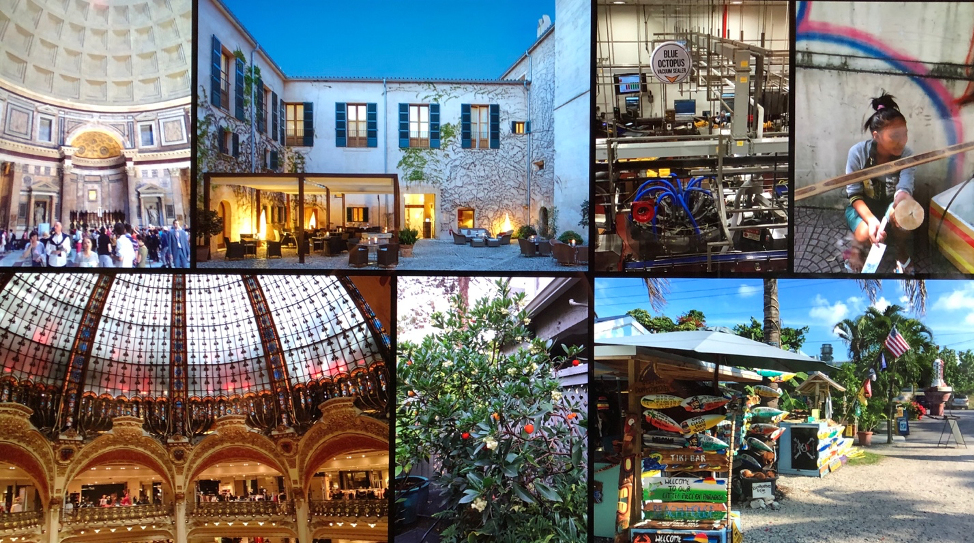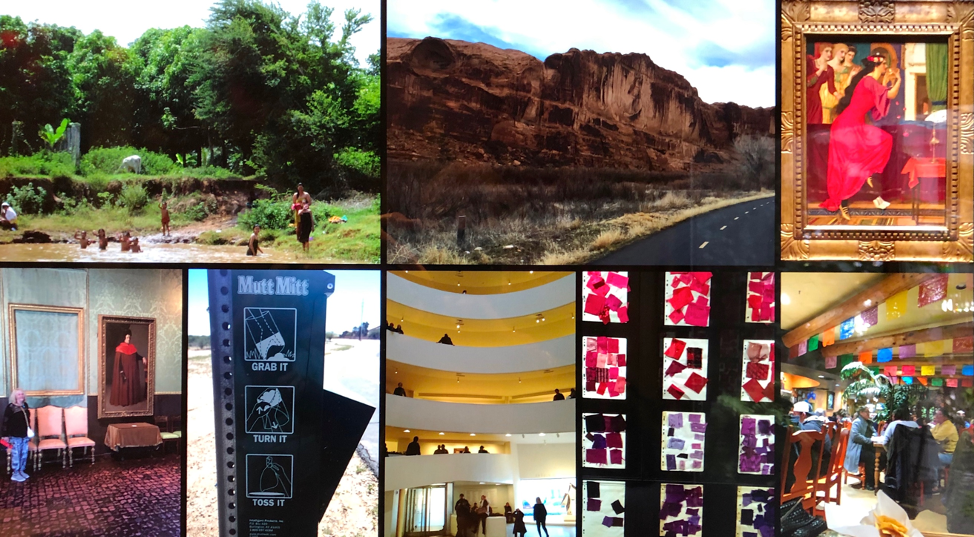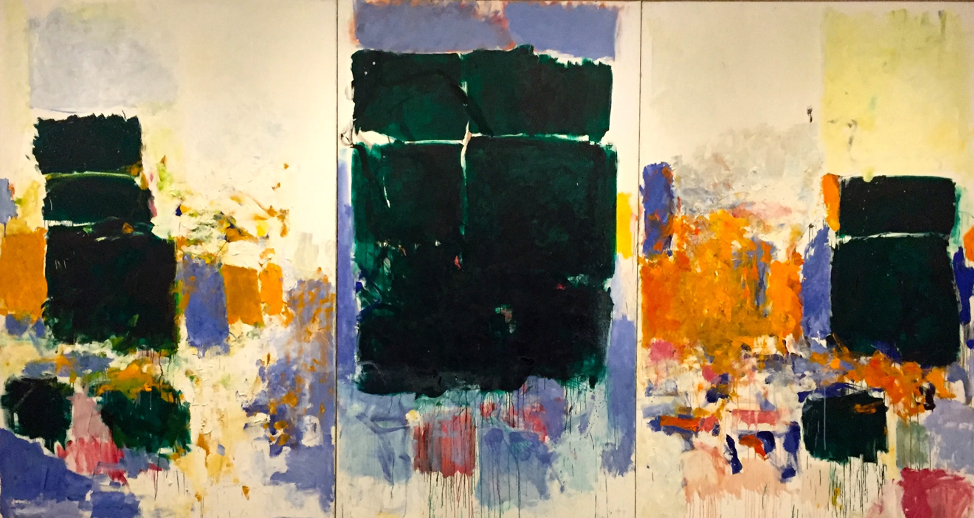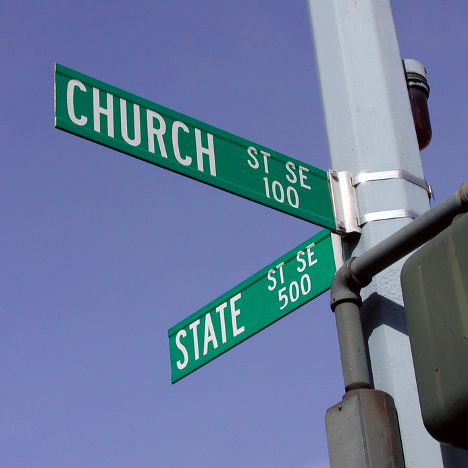With the dual contagions of Clovid-19 and Donald Trump in the air, I’ve been looking for an escape from the news cycle. It’s exhausting, but after combing the Netflix, Amazon Video, and Audible libraries while rereading The Plague, The Andromeda Strain, and Love in the Time of Cholera I think the solution is to go back to work. Writing as therapy.
Most writers carry a notebook where they jot down snippets of dialogue or the elements of a scene, so they have material for a story or article, but I was always a lousy notetaker. Back in college, when I was studying for an exam, I had a hard time making sense of my notes. Nothing stood out. I’d look at them and see nothing but “the” or “and” as if they were the important facts in a lecture. I was hopeless. It didn’t take long to learn I’m an oral and visual learner which is why I love the iPhone camera and why I never wanted to miss a class lecture.
Joan Didion’s essay On Keeping a Notebook is fascinating and full of conjecture on how and why notes are important and how details inform memory. But notebooks still don’t work for me. I have dozens of them, but they’ve never been an important part of my toolkit.
To be clear, even though I wasn’t a good notetaker I hated cameras. I felt ripped off buying film, threading it on the spool, and dealing with f-stops, apertures and focal lengths before taking twenty-seven pictures that cost a fortune to develop, but only two which I wanted to keep.
My Dad gave me an Argus C3 SLR when I graduated from college. It was his camera and I think he passed it to me because he hated to take pictures too. I used it once or twice but gave it away the night before my first trip to Europe. I didn’t want anything getting between me and the world. I didn’t regret the decision then, but there are long gaps where the only record I have are pictures friends took and shared with me.
I still have no regrets, but there were some incredible experiences over the years that I have no visual record of. Nepal. Africa. Greece. Turkey. Jerusalem. Damascus. Japan. Thailand. So many memorable locations and encounters with barely a picture until the iPhone came along. I love it.
All this is to say, the combination of the iPhone camera and the computer is like having a high-quality visual notebook. I write a weekly blog and am working on a book of essays, and in the writing process I often go to iPhoto to retrieve a picture or just to refresh my memory.

One of the things I love about my MacBook is the Desktop/Screensaver set of options. Both draw from my collection of 7864 photos. The Desktop picture changes every minute and the Screensaver feature, called Shifting Tiles presents in a random shuffle collage adding or subtracting tile photos every few seconds. Yesterday, M and I sat in my office and watched the shifting tiles as they presented elements of our lives over the last 10 or 20 years.
The two pictures in this post are of two different screenshots showing pieces of our lives in different venues. The photo above includes shots from:
- Inside the Pantheon in Rome
- A café courtyard on Sardinia
- The inner workings at the Tillamook Cheese Factory
- A girl selling coconuts on Dong Khoi Street in Saigon
- The interior of Galeries Lafayette in Paris
- M’s courtyard with strawberry tree
- A beach market in the Florida Panhandle
I wish I was a better notetaker. I’m sure it would make me a better writer. I’m not good at retaining dialogue, which is useful in relaying information and sources. On the other hand, with 7000+ photos to refresh my memory I don’t have to remember details in scenes I’m describing. The detail, the colors, the people, the scene itself is there to draw on. I wish I had pictures from my weeks on Crete or roaming the gold souk in Beirut or the back streets of old Jerusalem. I can refresh my memory by looking at other photos and reading other writers words, but they don’t pack the same punch as a photo I’ve taken at the scene or a story I’ve written.

This sliding tiles screenshot shows snapshots of:
- Our trip up the Mekong from Vietnam to Cambodia
- Biking along the road in Moab, Utah
- A pre-Raphaelite painting from the show at SAM
- M at the Isabella Stewart Gardner Museum in Boston
- Mutt Mitts in Tucson
- The Guggenheim Museum during the Picasso exhibit
- A mystery collage
- A Tucson taco bar
Each tile has a story that goes with it. Remember when people kept scrapbooks? This is so much more immediate and the digital photos don’t fade and curl up. It gives me more than a notebook ever could though I admire the writers that keep them. These sliding tiles tell stories of people and places that have enriched our lives and seeing them flash by takes us back to the prime experience.

































When Gery and I were sailing, we kept a log. That said there were days when we didn’t record because life was just too busy with managing the boat and our children. We are so thankful that our parents saved the letters we wrote them as they provided many missing details of our experiences. What has been most helpful for Gery as he writes his memoires is to have a treasure chest of photos. I think its true that a picture can paint a thousand words. These photos are a conduit to our collective memory in trying to recapture a memory. Wish our treasure chest was organized on an IPHONE! I remember the day Gery sold my Cannon in Suez. He thought we might need a little more cash to get through the canal! I was never a very good photographer so the loss of my camera freed me up to be in the moment.
Keep on writing!
Laurie
I am not very good going through all my pictures. Even harder is recall of what the photo was. I suppose keeping a journal would help. It really is amazing most of us have a portable computer in hand much more capable of the average computer of 25 years ago.